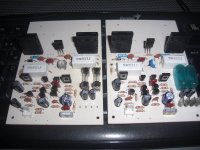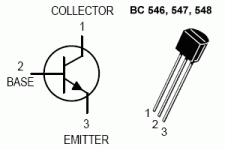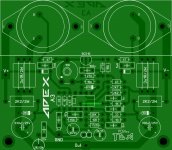if you want to pass 20Hz, then the filter must not be set to 20Hz.
The most often suggested alternative is that the filter be set to one decade below the required passband.
That makes the capacitor ten times bigger than the minimum.
If you are using an electrolytic which has measureable effects of distortion, then many suggest the capacitance be doubled compared to using film type capacitors. That gets one down to <1Hz for the F-3dB.
Look at D.Self's amplifier book. He shows the distortion and how his measured distortion reduces in the audio band by making the electrolytic bigger and bigger still.
But there is a problem.
The input should be fitted with two passive filters. One to block DC and one to attenuate RF.
If these are made very wide then the amplifier must be able to process the passing signal. In my opinion your other Thread has this problem. RF is getting through and the amp is unable to behave with that excessive RF input.
At the LF end the same applies. Push the passive filter so low that any extreme LF that now passes may interfere with the correct operation of the amplifier and the PSU.
The most often suggested alternative is that the filter be set to one decade below the required passband.
That makes the capacitor ten times bigger than the minimum.
If you are using an electrolytic which has measureable effects of distortion, then many suggest the capacitance be doubled compared to using film type capacitors. That gets one down to <1Hz for the F-3dB.
Look at D.Self's amplifier book. He shows the distortion and how his measured distortion reduces in the audio band by making the electrolytic bigger and bigger still.
But there is a problem.
The input should be fitted with two passive filters. One to block DC and one to attenuate RF.
If these are made very wide then the amplifier must be able to process the passing signal. In my opinion your other Thread has this problem. RF is getting through and the amp is unable to behave with that excessive RF input.
At the LF end the same applies. Push the passive filter so low that any extreme LF that now passes may interfere with the correct operation of the amplifier and the PSU.
I saw your comment about using an MLCC ceramic 10uF and thought, "Oh no !".
But I'm working through it and beginning to wonder if it could be a good choice.
The 100nF MKT is big enough to easily pass all the audio signals above 1kHz (provided Rin>=16kohms).
The lower mid and all the bass needs the big ceramic to prevent the MKT becoming a filter.
As a DC blocking capacitor there is virtually no AC signal voltage across it and there should be no DC voltage either. Particularly no varying DC across it.
Since there is no signal voltage across it, the ceramic cannot contribute to adding any "ceramic" type distortion, provided it is never asked to act as a filter.
i.e. make it big.
If we apply the same rules as to an electrolytic to minimise their added distortion, then making the F-3dB <1Hz gets to a suitable value.
For Rin=that same 16kohms your F-3dB is 0.985Hz
That just requires that the amplifier works well to below 1Hz. That can be quite demanding. Check your NFB roll-off and any other capcitors that need to be big to avoid LF gain limitations.
Hi Andrew,
for years, I didn't believe in speech on paper capaciptors, Paper/oil capacitors, etc...
I am not a good electronic guy - I am not a jedi, I have many years to learn, but what I learned with capacitors is it is no as simple
Temperature, resistors, inductance (yes), response time, etc...
many of these parameters are important in audio.
Unfortunately - and yes I am proud to be a measurement adept - again, There are not interesting measurements available....
As you I suspect a mix between ceramic and film should be enough. But no proof.
Hi camelator.
>what is the magic cap?>
If you looks query to pass forum you can find in ACA, BA-3, M2 thread that the Master
himself has no problem to use Elna SilmicII as input cap- ZM adds than a 10n old FKC too
in parallel.
I have tested with 105° low esr+10n fkc and feel not bad at all.
On Circlophone Input i have tested 10n orange drop 715P- it is my Favorit near followed
by nichicon QXP- in Fetzilla- also to get as 10n- Mouser.
The Filmcaps needs most time to burn in from 100 to any 100 hrs to be good listenable.
The Wima MKP10 is one of this too.
Good luck whatever you choose.
Cheers.
>what is the magic cap?>
If you looks query to pass forum you can find in ACA, BA-3, M2 thread that the Master
himself has no problem to use Elna SilmicII as input cap- ZM adds than a 10n old FKC too
in parallel.
I have tested with 105° low esr+10n fkc and feel not bad at all.
On Circlophone Input i have tested 10n orange drop 715P- it is my Favorit near followed
by nichicon QXP- in Fetzilla- also to get as 10n- Mouser.
The Filmcaps needs most time to burn in from 100 to any 100 hrs to be good listenable.
The Wima MKP10 is one of this too.
Good luck whatever you choose.
Cheers.
Hello xrk971
greetings bimos AX11 for MPSA 18 what transistor to substitute #8490 pic
warm regards
Andrew
2N5089
Hello xrk971
greetings bimos AX11 for MPSA 18 what transistor to substitute #8490 pic
warm regards
Andrew
Hi Andrew, As informed by Mr. Mile, BC517, BC546 can be used.
Final layout is in post 8279 using BC517
http://www.diyaudio.com/forums/soli...imate-fidelity-amplifier-828.html#post4794009
reg
Prasi
Wait... BC517 is a darlington. BC546 is not!Hi Andrew, As informed by Mr. Mile, BC517, BC546 can be used.

Attachments
Last edited:
Wait... BC517 is a darlington. BC546 is not!
I thought he asked about a replacement for MPSA18? That would be 2N5088 or 2N5089.
Wait... BC517 is a darlington. BC546 is not!
http://www.diyaudio.com/forums/soli...imate-fidelity-amplifier-828.html#post4793991 post #8277
http://www.diyaudio.com/forums/soli...imate-fidelity-amplifier-828.html#post4793888 post #8272
- Home
- Amplifiers
- Solid State
- 100W Ultimate Fidelity Amplifier





